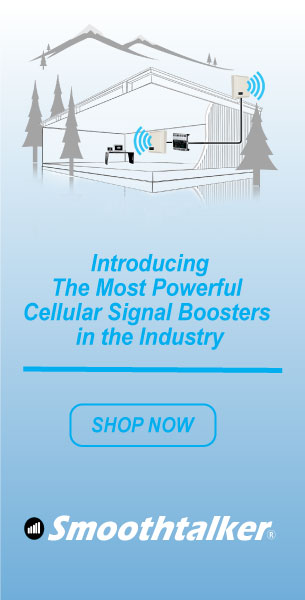
Mobile Hotspots: How They Work and Why They Matter
Mobile hotspots have emerged as indispensable tools for staying connected on the go. Whether you’re a digital nomad, a business professional, or a casual traveller, understanding what mobile hotspots are and how they work can significantly enhance your productivity and convenience.
What Are Mobile Hotspots?
When it comes to connectivity, two key components that play a crucial role are mobile hotspots and cell phone signal boosters.
A mobile hotspot is a portable device that enables users to create a Wi-Fi network, allowing multiple devices to connect to the internet using cellular data. Essentially, it acts as a bridge between cellular networks and Wi-Fi-enabled devices such as laptops, smartphones, tablets, and more.
These devices come in various forms, including dedicated portable hotspots, smartphones with hotspot capabilities, and USB dongles that plug into computers. They utilise cellular networks, such as 4G LTE or 5G, to establish an internet connection, providing users with internet access virtually anywhere with cellular coverage.
How Do They Work?
The functionality of mobile hotspots revolves around three primary components: the cellular network, the hotspot device itself, and the connected devices. Here’s a breakdown of how they work together seamlessly:
- Cellular Network Connectivity
Mobile hotspots rely on cellular networks operated by telecommunications companies. These networks transmit data wirelessly over vast geographical areas, ensuring connectivity even in remote locations where traditional Wi-Fi infrastructure might be lacking. - Hotspot Device Operation
The mobile hotspot device acts as a gateway between the cellular network and Wi-Fi-enabled devices. It contains a SIM card slot for cellular connectivity and typically features an interface for configuration settings. When activated, the device establishes a secure Wi-Fi network, allowing nearby devices to connect to it. - Device Connectivity
Once the mobile hotspot is activated and the Wi-Fi network is established, users can connect their devices to the hotspot just like they would with any other Wi-Fi network. They select the hotspot’s network name (SSID) from the available networks list on their device and enter the provided password to establish a connection.Advantages of Mobile Hotspots
Mobile hotspots offer several advantages that make them invaluable tools for both personal and professional use:
- Portability: Unlike traditional fixed-line internet connections, mobile hotspots are portable, allowing users to stay connected wherever they go. Whether you’re travelling for business or leisure, a mobile hotspot ensures uninterrupted internet access.
- Flexibility: Mobile hotspots provide flexibility in choosing your internet provider and plan. Users can select the cellular network provider and data plan that best suits their needs, avoiding the limitations of fixed-line providers and contracts.
- Security: Most mobile hotspot devices offer built-in security features, such as password protection and encryption, to ensure a secure connection. This is particularly crucial when accessing sensitive information or conducting online transactions.
- Multiple Device Connectivity: With a mobile hotspot, users can connect multiple devices to the internet simultaneously, making it ideal for sharing internet access with friends, family, or colleagues.
- Backup Connectivity: In situations where traditional internet connections fail or are unavailable, mobile hotspots serve as reliable backup options, ensuring continuity in communication and productivity.
Cell Phone Signal Boosters: Amplifying Connectivity
While mobile hotspots are excellent for creating internet access on the go, they rely on a stable cellular signal to provide that connectivity. Unfortunately, there are many areas where cell phone reception is weak or unreliable, leading to dropped calls, slow internet speeds, and frustrating connectivity issues.
This is where cell phone signal boosters come into play. A cell phone signal booster is a device designed to amplify existing cellular signals, improving reception and data speeds in areas with poor coverage.
The process is relatively straightforward. A typical cell phone signal booster consists of three main components: an outdoor antenna, an indoor antenna, and an amplifier. The outdoor antenna is installed outside your building or vehicle, where it can capture the existing weak signal. This signal is then transmitted to the amplifier, which boosts its strength. Finally, the amplified signal is broadcasted by the indoor antenna, providing improved cellular coverage inside your home, office, or vehicle.
By enhancing cellular signals, cell phone signal boosters ensure that mobile hotspots have a strong and reliable connection to the internet, even in areas with poor coverage. This means faster speeds, fewer dropped calls, and a more seamless browsing experience, whether you’re using your smartphone or connecting other devices via a mobile hotspot.
At Smoothtalker, we understand the importance of staying connected, no matter where you are. That’s why we offer a range of high-quality cell phone signal boosters designed to improve cellular coverage and enhance your connectivity experience.
Whether you’re struggling with poor reception in rural areas, or experiencing dropped calls in urban environments our signal boosters can help. With easy installation, reliable performance, and compatibility with all major carriers, Smoothtalker signal boosters are the solution you need to unlock seamless connectivity.
Don’t let poor cell phone reception hold you back. Take control of your connectivity with Smoothtalker cell phone signal boosters. For more information or to inquire about our products, feel free to message us at info@smoothtalker.com or call 1-877-726-3444. Stay connected, stay productive, with Smoothtalker.

